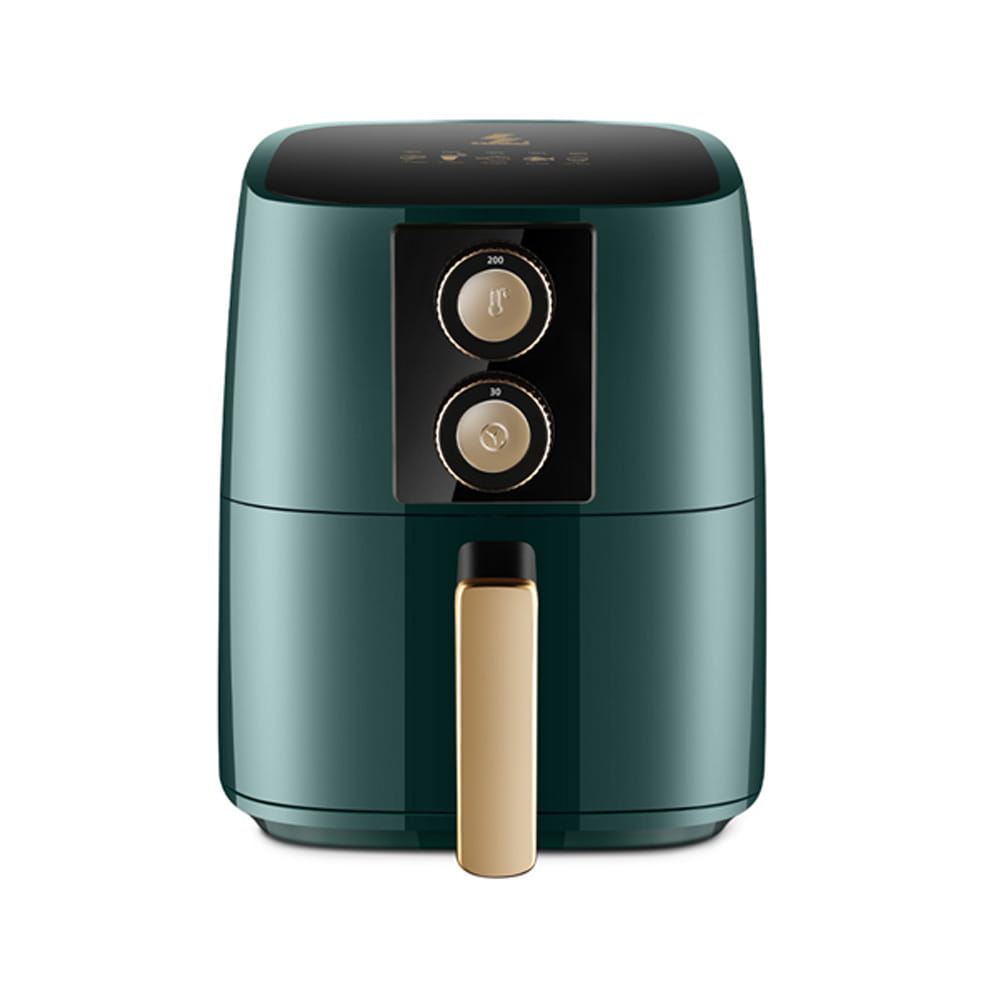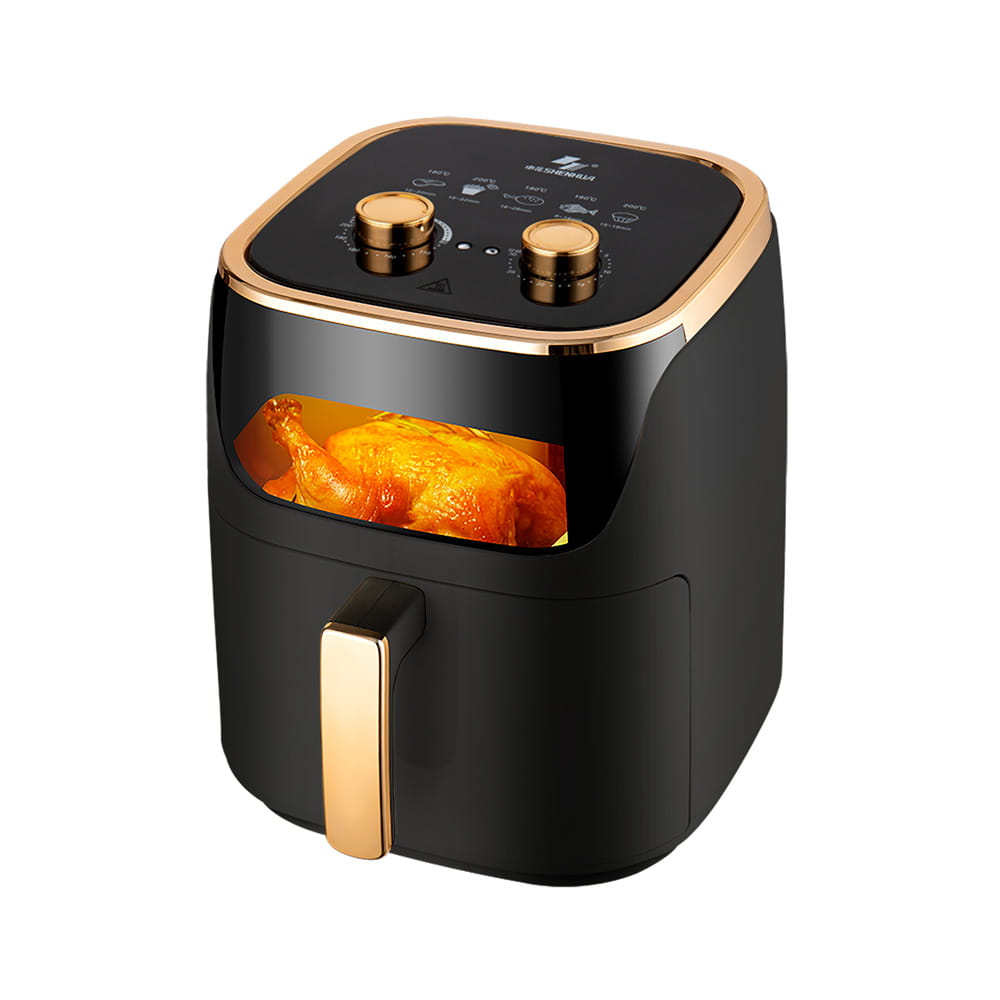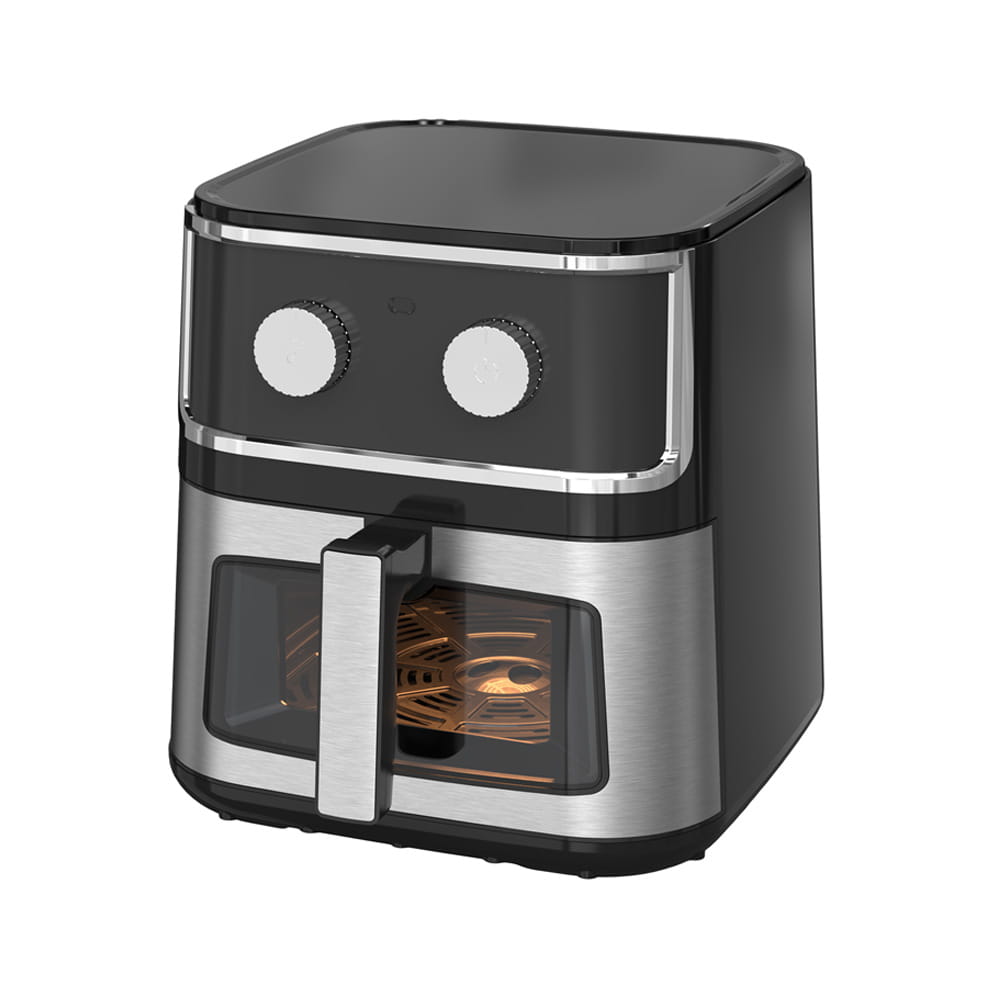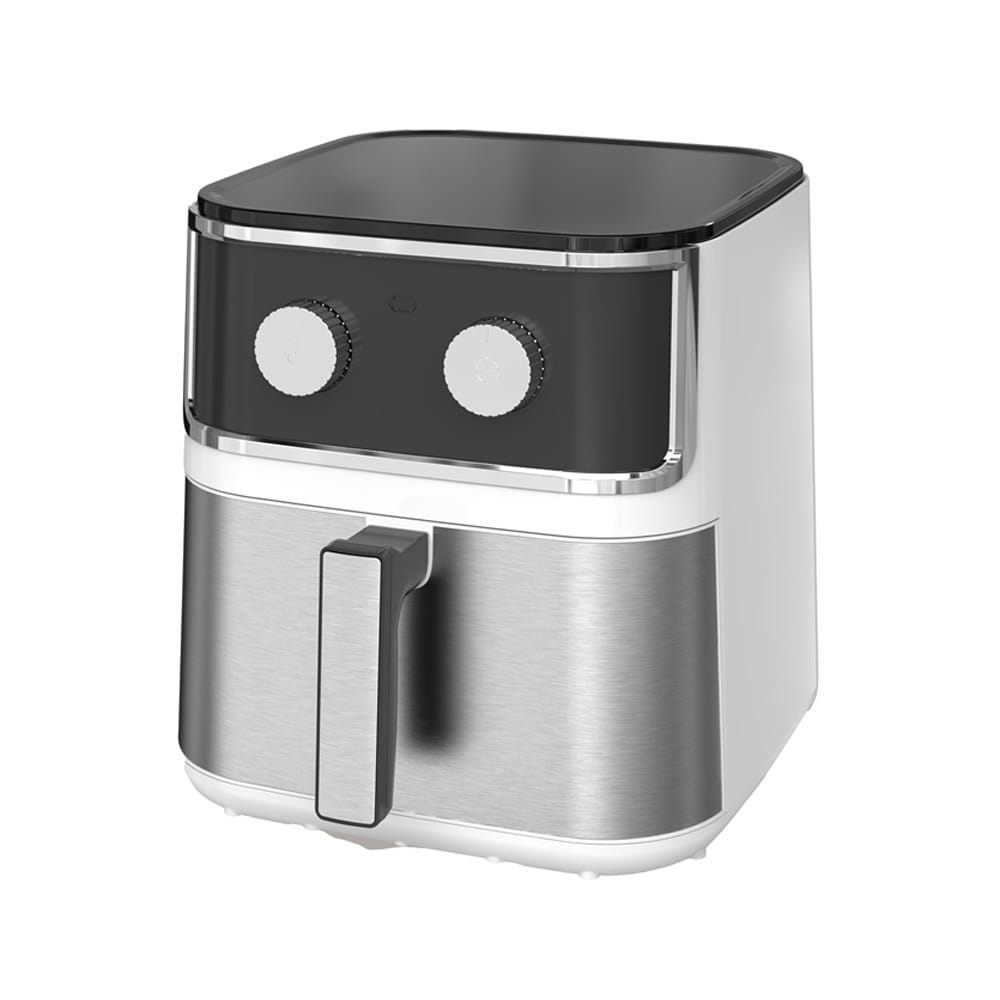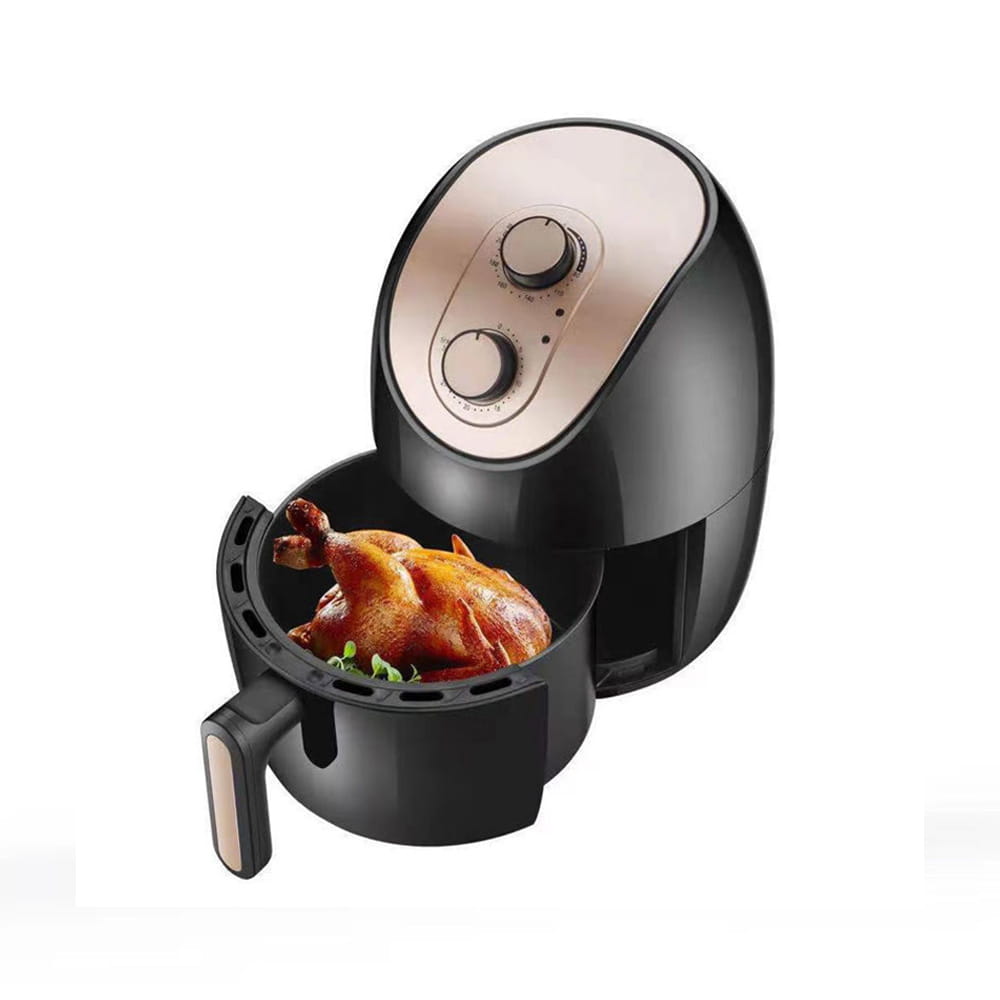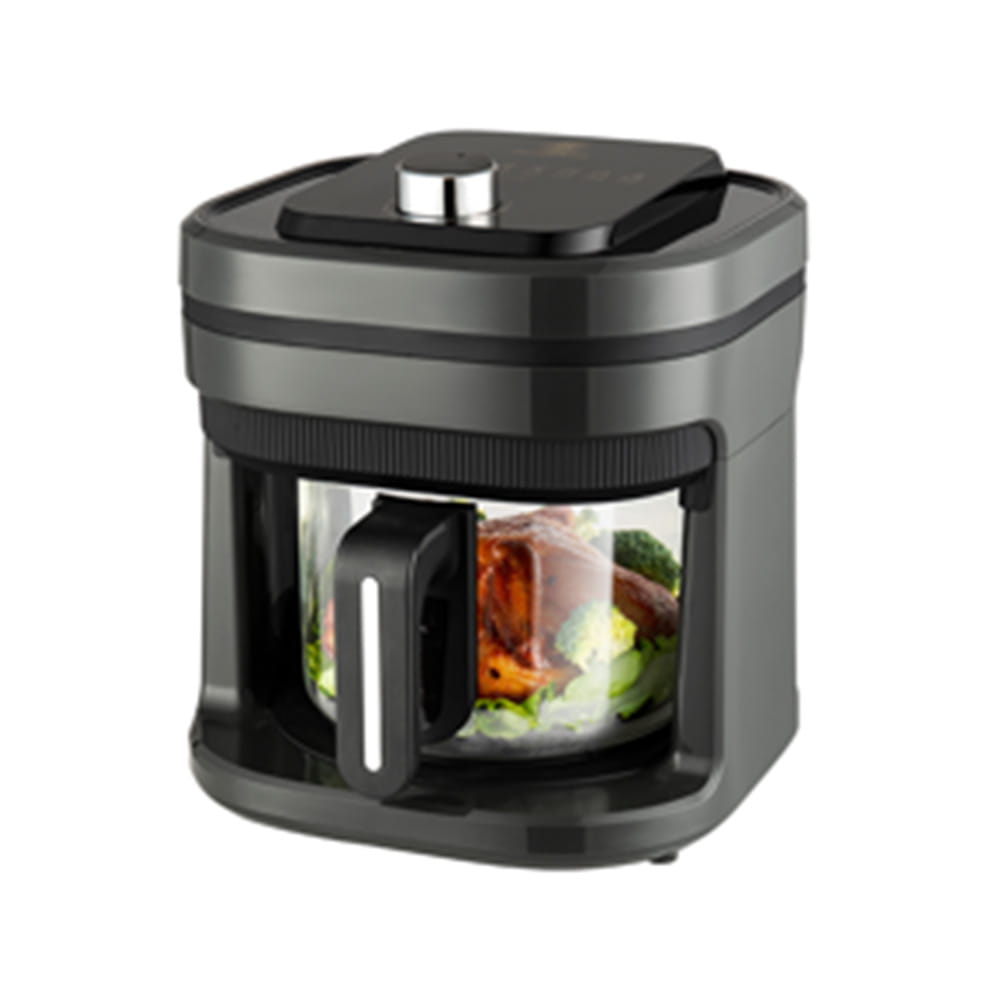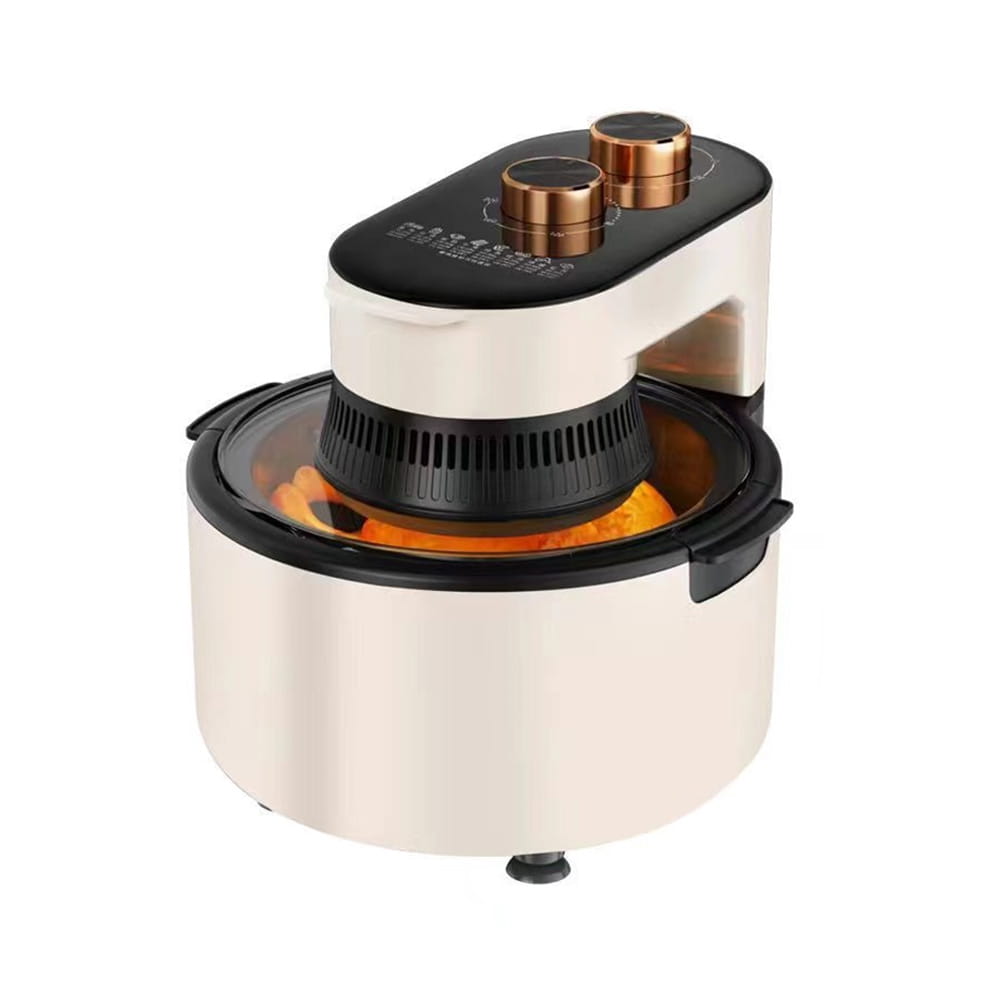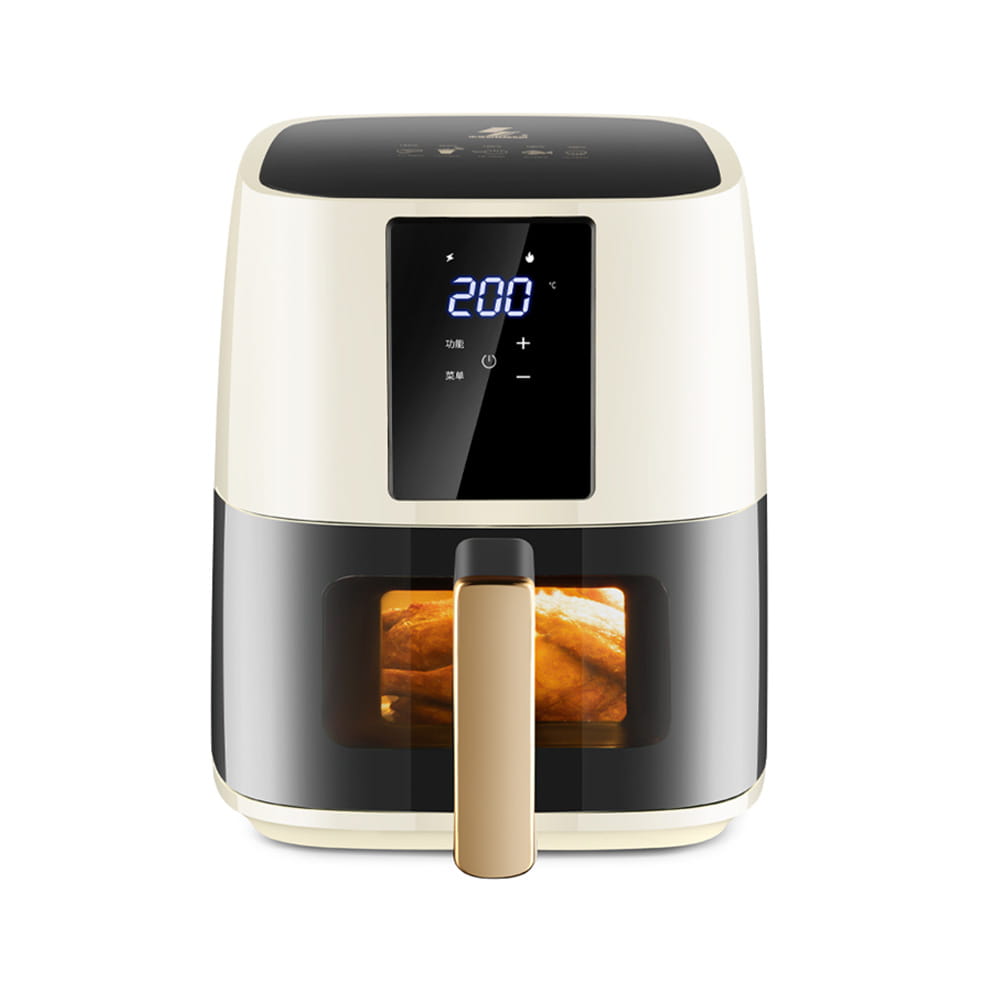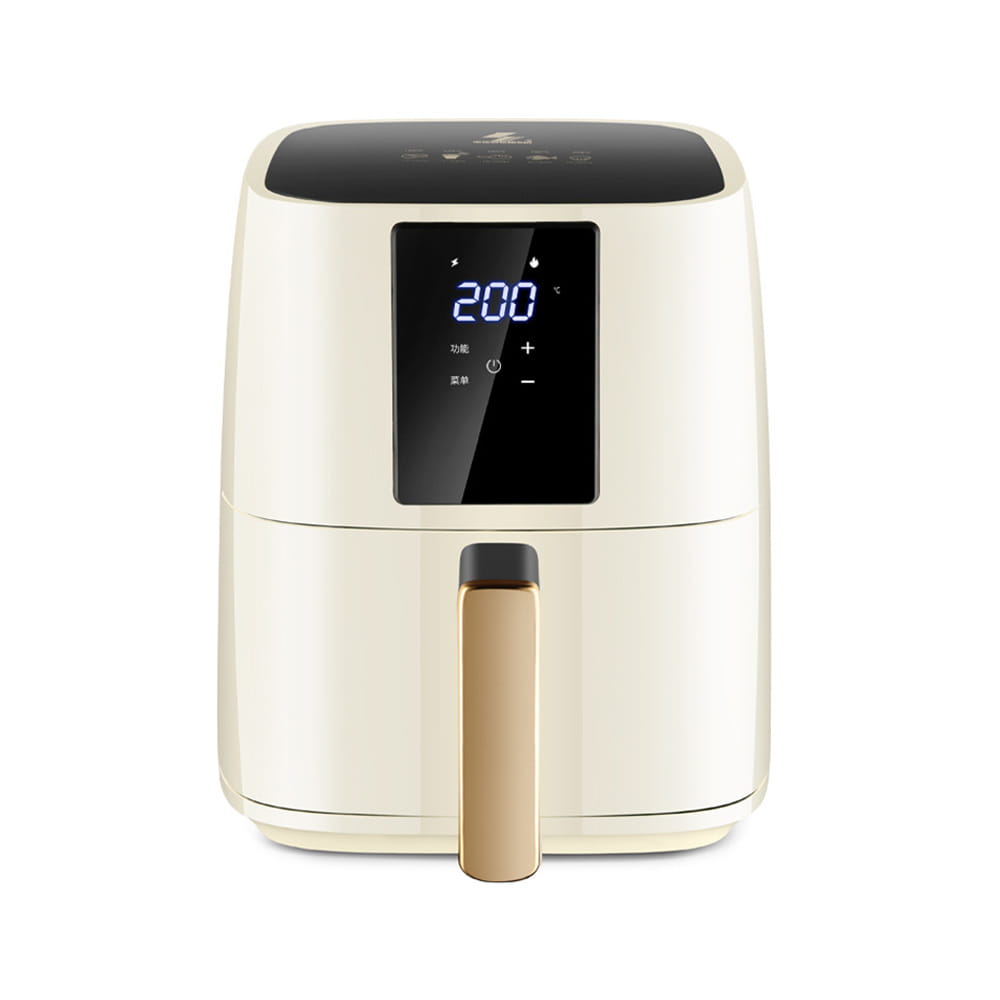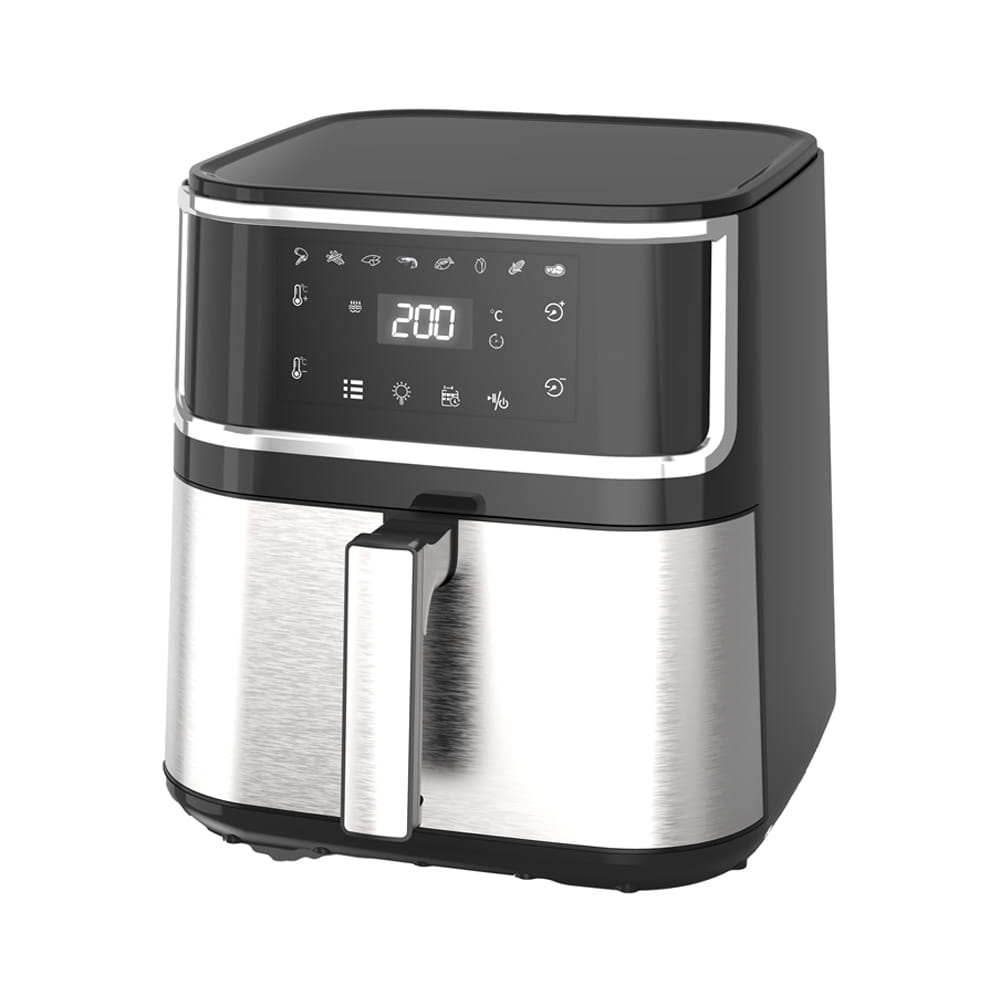Temperature control accuracy is a key performance metric for air fryers, directly impacting cooking results and food safety. Stainless steel air fryers, particularly due to their durability and excellent thermal conductivity, place even stricter demands on their temperature control systems.
Temperature Control System Structure and Principle
Stainless steel air fryers typically utilize an electronic temperature control system, whose core components include a temperature sensor, a control chip, and a heating element. The temperature sensor, typically a thermocouple or thermistor (NTC/PTC), monitors the air temperature or the surface temperature of the food inside the fryer in real time. The sensor transmits the collected data to the control chip, which controls the power output of the heating element based on the set temperature parameters to maintain a stable temperature.
This closed-loop control system dynamically adjusts heating intensity for precise temperature management. High-precision sensors and fast-response control chips are key to ensuring temperature control accuracy.
Temperature Control Accuracy Range
The temperature control accuracy of stainless steel air fryers on the market generally ranges from ±1°C to ±3°C. High-end products can achieve an accuracy of ±1°C, while mid-range and low-end products may have a temperature control error of ±2°C to ±3°C. Specifically, when the user sets the temperature to 180°C, the actual temperature typically fluctuates between 177°C and 183°C. A temperature control error of ±1°C means the air fryer can precisely control the temperature, ensuring even cooking of food for the desired texture and doneness.
Factors Affecting Temperature Control Accuracy
Temperature Sensor Type and Installation Location
The sensor's sensitivity and response speed determine the responsiveness of the temperature control system. Installation location is also crucial. If the sensor is close to the heating element, the measured temperature will be higher. If it is installed farther from the food, the measured temperature will be lower, affecting temperature control accuracy.
Control Chip Algorithm Optimization
The control chip uses a PID (Proportional-Integral-Derivative) control algorithm, which dynamically adjusts heating power based on temperature changes to minimize temperature fluctuations. The level of algorithm optimization directly affects temperature control stability and accuracy.
Thermal Conductivity of Stainless Steel
Stainless steel has medium thermal conductivity, a large heat capacity, and good heat transfer uniformity, which helps stabilize the temperature environment. However, this also results in a slightly slower heating rate, requiring timely adjustments by the temperature control system to avoid temperature lag. Air Circulation System Design
Air fryers use fans to circulate hot air at high speed, ensuring even heating of ingredients. Improper air flow design can lead to localized temperature differences, affecting temperature control. Good air circulation can effectively improve temperature control accuracy.
External Environmental Factors
Fluctuations in ambient temperature and humidity can also affect the temperature control system. Especially in low temperatures, the heating element activates more frequently, making control more difficult.
The Impact of Temperature Control Accuracy on Cooking Results
Precise temperature control ensures that food is both delicious and flavorful. Excessively high temperatures can cause burnt surfaces and undercooked interiors, while excessively low temperatures can lead to a less crispy texture, impacting overall quality. For fried ingredients like chicken wings, French fries, and seafood, controlling temperature fluctuations within ±1°C ensures perfect frying, ensuring a crispy exterior and tender interior.
In addition, high temperature control accuracy reduces oil usage, leveraging the air fryer's health benefits and meeting the healthier eating needs of modern consumers.

 English
English Español
Español